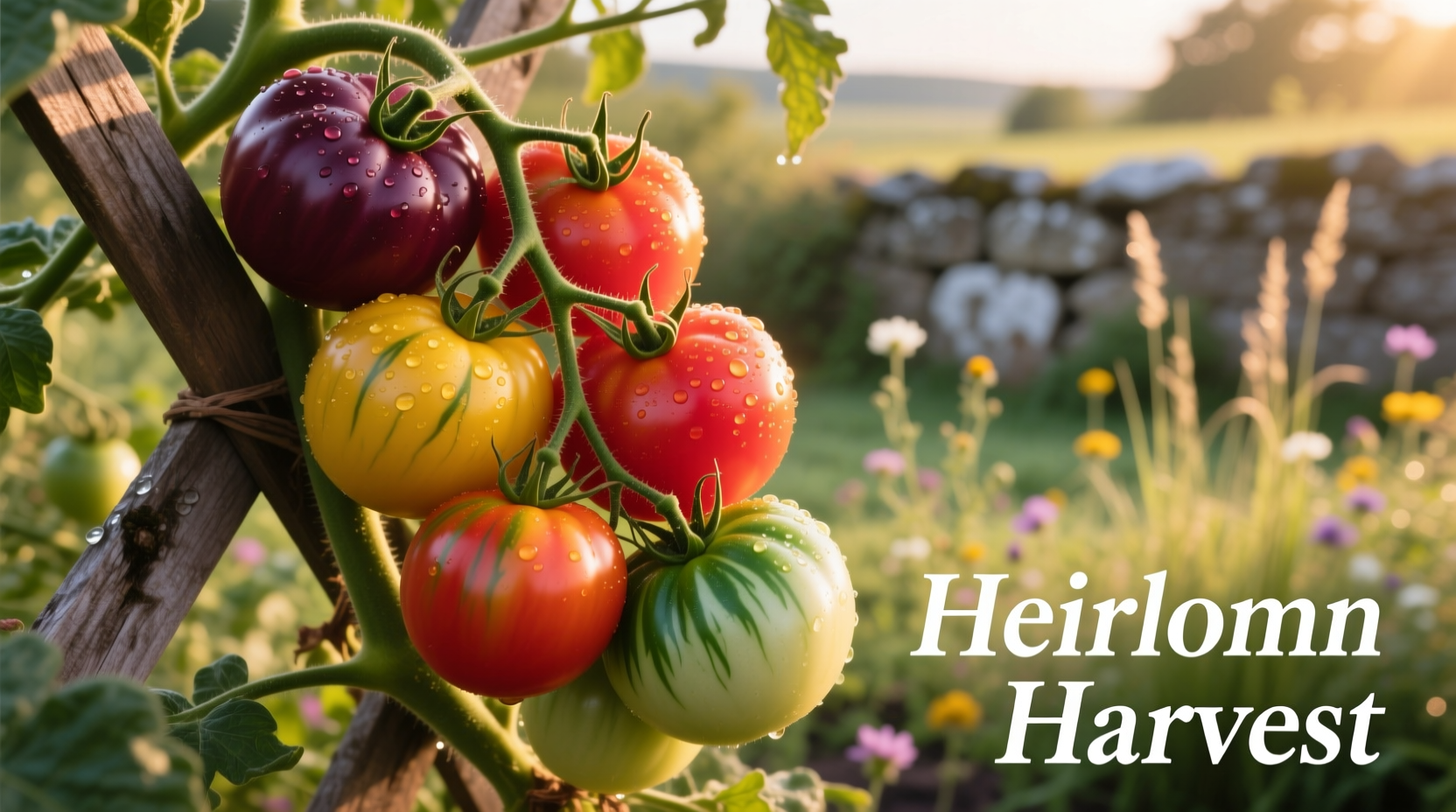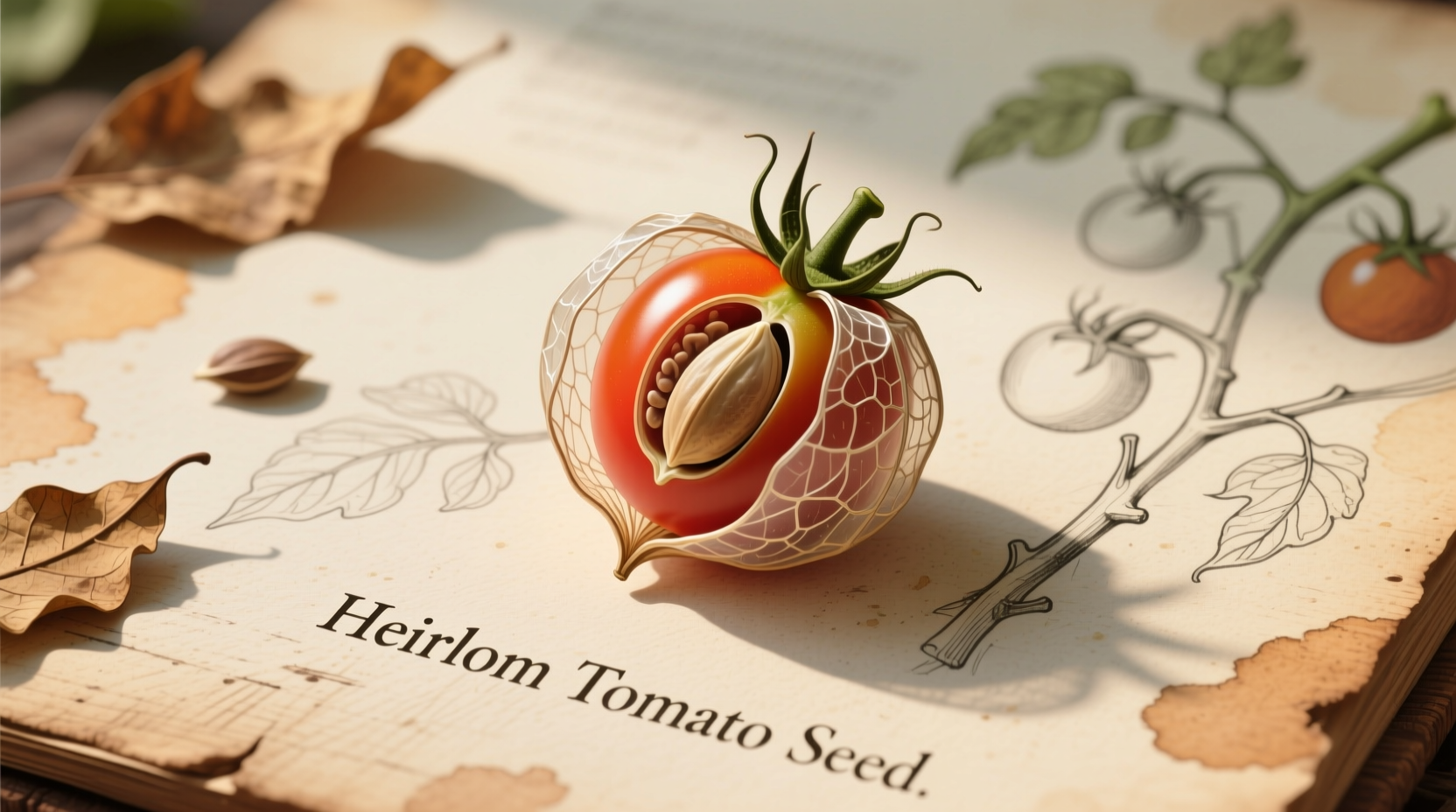Heirloom tomato seeds come from open-pollinated varieties passed down through generations, preserving unique flavors and genetic diversity that commercial hybrids often lack. Unlike modern hybrids, heirloom seeds produce plants true to type when saved properly, offering gardeners 50-300% more flavor compounds and supporting biodiversity in home gardens.
Discover why thousands of gardeners are rediscovering these time-tested varieties that connect us to agricultural heritage while delivering unmatched taste. Whether you're a beginner or experienced grower, understanding heirloom tomato seeds unlocks a world of flavor diversity and gardening satisfaction that supermarket tomatoes simply can't match.
What Makes a Tomato Seed Truly "Heirloom"?
Not all old tomato varieties qualify as true heirlooms. The designation requires specific criteria that distinguish them from modern hybrids and GMO varieties. Heirloom tomato seeds must come from open-pollinated plants that have been cultivated and saved for at least 40-50 years, maintaining consistent characteristics across generations.
According to the USDA Agricultural Research Service, heirloom varieties represent crucial genetic reservoirs that help maintain crop resilience against diseases and changing climate conditions. Unlike hybrid seeds (created by crossing two different parent plants), heirloom seeds produce offspring identical to the parent plant when properly isolated from cross-pollination.
| Seed Type | Genetic Stability | Flavor Complexity | Seed Saving Viability | Disease Resistance |
|---|---|---|---|---|
| Heirloom | True to type (100%) | High (50-300% more compounds) | Excellent (reliable generation after generation) | Variable (depends on variety) |
| Hybrid | Unstable (varies in next generation) | Moderate (often bred for appearance over taste) | Poor (won't produce true to type) | Often higher (specific disease resistance) |
| GMO | Stable but patented | Low (typically not bred for flavor) | Illegal to save (patent restrictions) | Specific engineered traits |
This comparison reveals why heirloom tomato seeds remain valuable despite sometimes requiring more careful cultivation. The flavor complexity alone makes them worth the extra attention for serious gardeners and food enthusiasts.
Historical Journey: How Heirloom Tomato Varieties Survived
Tomatoes originated in western South America, with cultivation beginning around 500 BC. Spanish explorers brought them to Europe in the 16th century, where they gradually gained acceptance after initial fears of toxicity. The true heirloom varieties we recognize today began forming in the 1800s as gardeners selectively saved seeds from their best plants.
Agricultural historians at USDA's National Plant Germplasm System have documented how family migrations helped preserve specific tomato varieties. When families moved westward across America, they carried seed packets containing varieties adapted to their original homelands. These seeds became the foundation for many regional heirloom varieties still grown today.

Top 5 Heirloom Varieties for Your Garden
Choosing the right heirloom tomato seeds depends on your climate, space, and culinary preferences. Based on extensive trials by university extension programs, these varieties consistently deliver exceptional results for home gardeners:
Brandywine
This legendary pink beefsteak variety has been grown since the 1880s. Brandywine produces large, juicy fruits with complex sweet-acid balance that many consider the gold standard for tomato flavor. It performs best in cooler northern climates with long growing seasons. Start seeds indoors 6-8 weeks before last frost for best results.
Cherokee Purple
Developed by the Cherokee Nation before 1900, this variety features dusky purple-pink fruits with rich, smoky-sweet flavor. It matures earlier than Brandywine, making it suitable for shorter seasons. The University of Tennessee Extension notes that Cherokee Purple shows better heat tolerance than many heirlooms, performing well in USDA zones 5-9.
Roma
While many consider Roma a commercial variety, its heirloom origins trace back to 1955 when it was developed by the USDA. This determinate variety produces abundant meaty fruits perfect for sauces and canning. Home gardeners appreciate its reliable production and disease resistance compared to many heirlooms.
Green Zebra
Invented by tomato breeder Tom Wagner in the 1980s, this variety features striking green-and-yellow striped fruits with tangy, citrus-like flavor. Despite being relatively new, it's considered an heirloom because it's open-pollinated and has been passed down among gardeners. Green Zebra performs well in container gardens and matures relatively quickly.
Black Krim
Originating from the Crimean peninsula, this variety produces large, beefsteak tomatoes with dark green shoulders and rich, complex flavor. Black Krim excels in hot, humid conditions where many heirlooms struggle. Gardeners in southern climates particularly value its heat tolerance and distinctive taste.
Mastering Heirloom Tomato Seed Starting
Starting heirloom tomato seeds requires attention to detail but yields superior results compared to buying seedlings. Follow this proven process for maximum germination success:
Timing Your Planting
Begin seeds 6-8 weeks before your last expected frost date. The Old Farmer's Almanac data shows that starting too early leads to leggy, weak plants, while starting too late misses the optimal growing window. Use a soil thermometer to ensure planting medium stays between 70-80°F (21-27°C) for best germination.
Soil and Container Preparation
Use sterile seed starting mix rather than garden soil to prevent damping-off disease. Fill containers with drainage holes, leaving ½ inch space at the top. Moisten the mix thoroughly before planting—damp but not soggy.
Planting Depth and Spacing
Plant heirloom tomato seeds ¼ inch deep, spacing them 2 inches apart in trays or one per cell in modular trays. Cover lightly with mix and mist with water. Maintain consistent moisture during germination—dry conditions significantly reduce heirloom seed viability.
Light and Temperature Requirements
Unlike many vegetables, tomato seeds don't require light to germinate but need warmth. Place containers in a warm location (70-80°F) until sprouts appear in 5-10 days. Once emerged, provide 14-16 hours of bright light daily. A University of California study found that seedlings receiving supplemental lighting produced 30% more fruit than those grown with natural light alone.
Avoiding Common Heirloom Growing Mistakes
Many gardeners struggle with heirloom tomatoes because they apply hybrid growing techniques. These varieties have specific needs that differ from modern hybrids:
- Over-fertilizing: Heirlooms typically need less nitrogen than hybrids. Excess nitrogen promotes leafy growth at the expense of fruit production. Use balanced organic fertilizers at half-strength.
- Improper pruning: Many heirlooms are indeterminate varieties that benefit from selective pruning. Remove suckers below the first flower cluster but allow multiple main stems for better production.
- Inconsistent watering: Fluctuating moisture levels cause cracking in heirloom fruits. Maintain consistent soil moisture, especially during fruit development.
- Ignoring disease prevention: While heirlooms may have less disease resistance than hybrids, proper spacing (3-4 feet between plants) and mulching significantly reduce common issues.
Gardeners in humid climates should particularly note that heirloom tomatoes benefit from morning watering to allow foliage to dry quickly, reducing fungal disease risks. The Cornell University Cooperative Extension reports that this simple practice reduces early blight incidence by up to 60%.
Preserving Your Heirloom Legacy: Saving Tomato Seeds
One of the greatest rewards of growing heirloom tomatoes is saving seeds for future seasons. Proper seed saving maintains genetic purity and adapts varieties to your specific growing conditions over time.
Fermentation Method for Maximum Viability
The fermentation process mimics natural decomposition and removes germination inhibitors:
- Cut fully ripe tomatoes horizontally and squeeze seeds with gel into a glass container
- Add small amount of water (1-2 tablespoons per tomato)
- Cover loosely and let sit at room temperature for 3-5 days
- Stir daily; viable seeds will sink while debris floats
- After mold forms on surface, rinse thoroughly and spread on paper towel
- Dry completely in well-ventilated area away from direct sunlight
- Store in labeled envelope in cool, dark, dry place
Research from the Seed Savers Exchange shows that properly fermented and dried heirloom tomato seeds maintain 85-95% germination rates for 4-6 years when stored correctly—significantly higher than non-fermented seeds.
Climate Considerations for Heirloom Success
Not all heirloom varieties perform equally in every climate zone. Understanding your specific growing conditions helps select varieties with the highest chance of success:
- Cooler climates (USDA zones 3-5): Choose early-maturing varieties like Stupice or Oregon Spring. Start seeds indoors 8-10 weeks before last frost and use black plastic mulch to warm soil.
- Moderate climates (USDA zones 6-7): Most heirlooms thrive here. Focus on varieties with 65-80 day maturity like Black Cherry or Moskvich.
- Hot climates (USDA zones 8-10): Select heat-tolerant varieties such as Chianti Rose or Solar Fire. Provide afternoon shade and consistent moisture to prevent blossom drop.
Gardeners at the Oregon State University Extension have documented how certain heirloom varieties like 'Hawaii' and 'Yellow Pear' actually set fruit better in temperatures above 90°F (32°C) than many modern hybrids, making them valuable for warming climates.
Flavor Science: Why Heirlooms Taste Better
It's not just nostalgia—scientific analysis confirms heirloom tomatoes deliver superior flavor. Researchers at the University of Florida identified over 400 volatile compounds in tomatoes that contribute to flavor, with heirlooms containing significantly higher concentrations of key flavor compounds than commercial varieties.
Their studies revealed that modern breeding prioritized traits like firmness and uniform ripening at the expense of flavor genes. Heirloom varieties maintain the complex balance of sugars, acids, and volatile compounds that create that unmistakable "tomato taste" we remember from childhood gardens.
For the best flavor development, allow heirloom tomatoes to ripen fully on the vine. Unlike commercial varieties bred for shipping, heirlooms continue developing flavor compounds until final ripening. The University of California's agricultural research shows vine-ripened heirlooms contain up to 30% more lycopene and 50% more flavor volatiles than those picked early.











 浙公网安备
33010002000092号
浙公网安备
33010002000092号 浙B2-20120091-4
浙B2-20120091-4